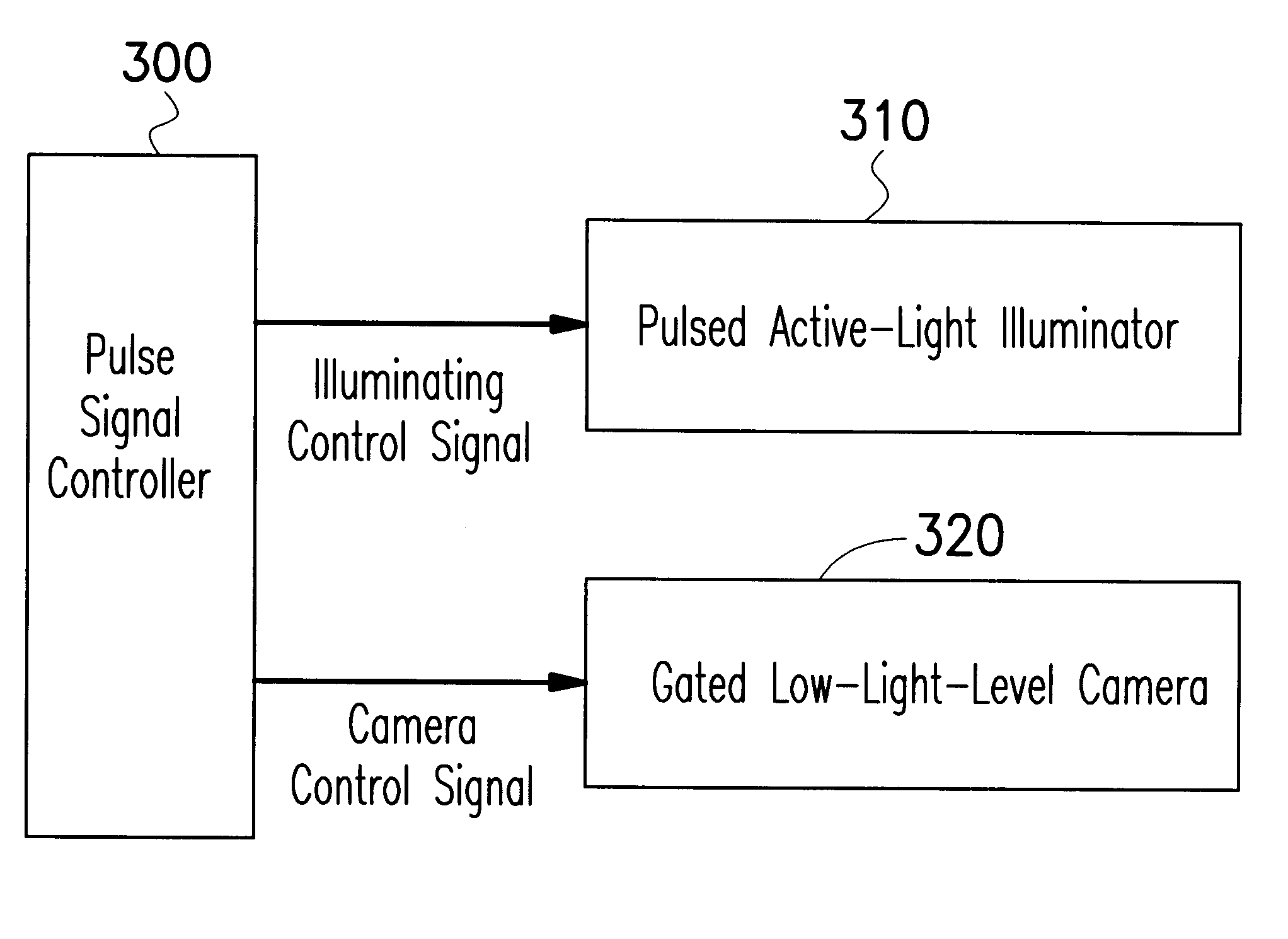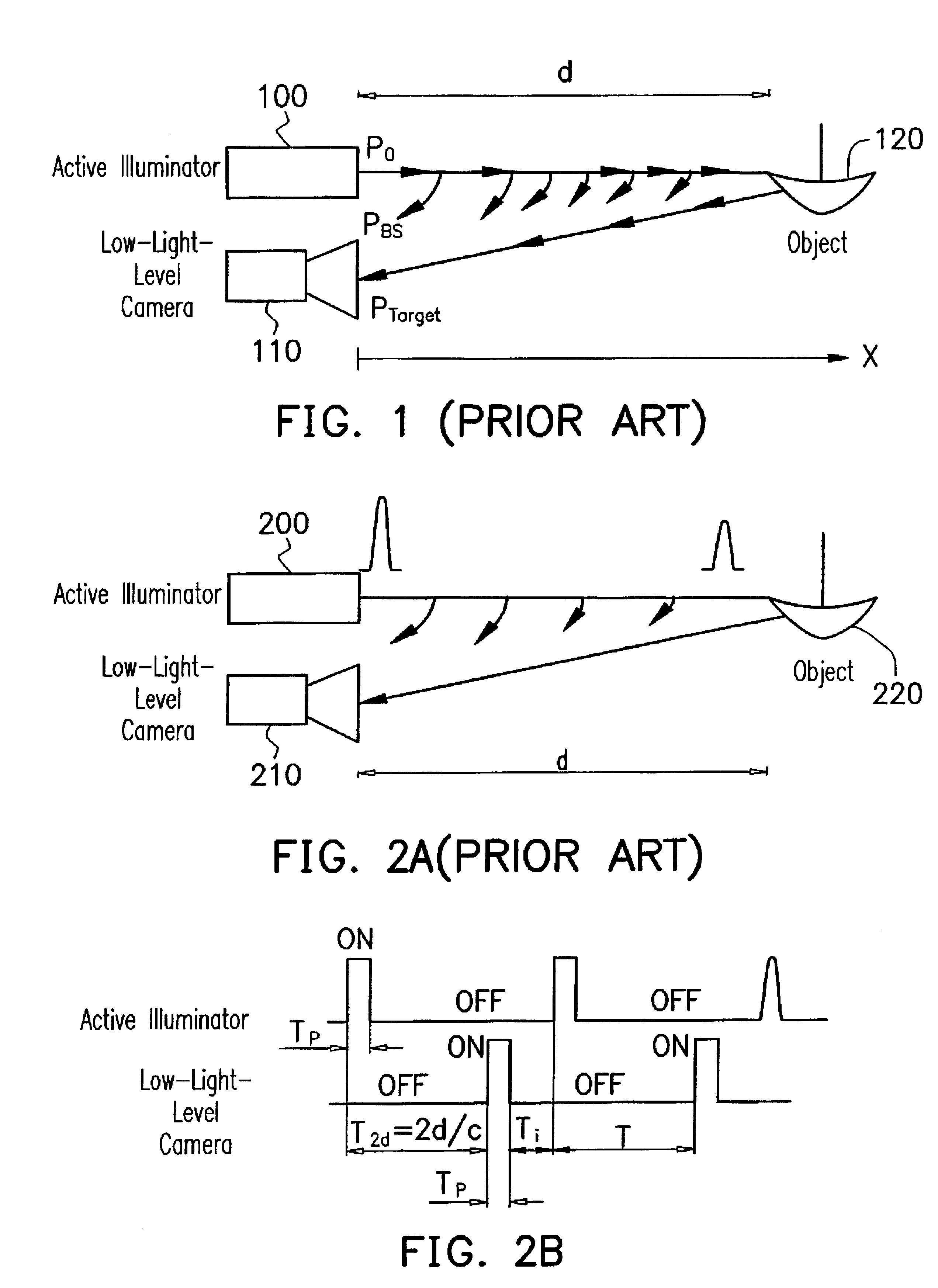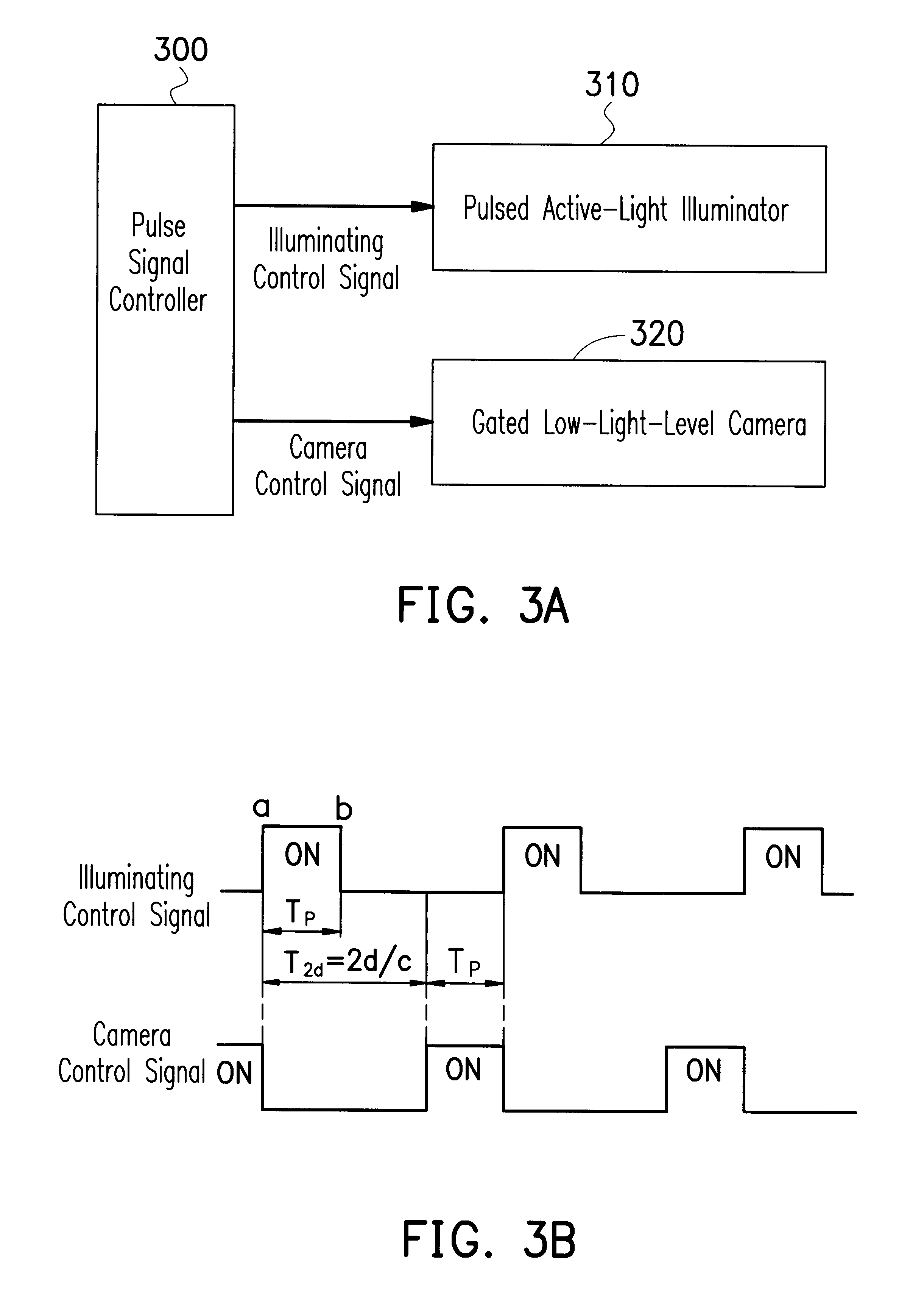Method for controlling a light source in a night vision surveillance system
a technology of night vision and surveillance system, applied in the field of night vision surveillance system, can solve the problems of limited application, lll camera may lose its function to observe objects, and each light pulse can only provide a very limited power, so as to improve the observable range of night vision system, reduce light noise, and reduce the effect of nois
- Summary
- Abstract
- Description
- Claims
- Application Information
AI Technical Summary
Benefits of technology
Problems solved by technology
Method used
Image
Examples
Embodiment Construction
FIG. 3A is a block diagram, schematically illustrating a night vision system with a pulsed active-light illuminator, according to a preferred embodiment of the invention.
In FIG. 3A, a night vision system includes at least a pulse signal controller 300, a pulsed active-light illuminator 310, and a gated low-light-level camera 320. The pulse signal controller 300 can produce an illuminating control signal to control the pulsed active-light illuminator 310 so as to periodically emit light pulses with a given frequency and a duty cycle D. The pulse signal controller 300 can also produce a camera control signal to control the gated low-light-level camera 320 so as to properly gate it on for receiving the light pulses reflected by an object, which is like the one shown in FIG. 2A.
A consideration about how to improve the performance of the night vision system is following. As a physical phenomenon, a light intensity of the light pulse usually decays when the pulse is reflected by the objec...
PUM
 Login to View More
Login to View More Abstract
Description
Claims
Application Information
 Login to View More
Login to View More - R&D
- Intellectual Property
- Life Sciences
- Materials
- Tech Scout
- Unparalleled Data Quality
- Higher Quality Content
- 60% Fewer Hallucinations
Browse by: Latest US Patents, China's latest patents, Technical Efficacy Thesaurus, Application Domain, Technology Topic, Popular Technical Reports.
© 2025 PatSnap. All rights reserved.Legal|Privacy policy|Modern Slavery Act Transparency Statement|Sitemap|About US| Contact US: help@patsnap.com



